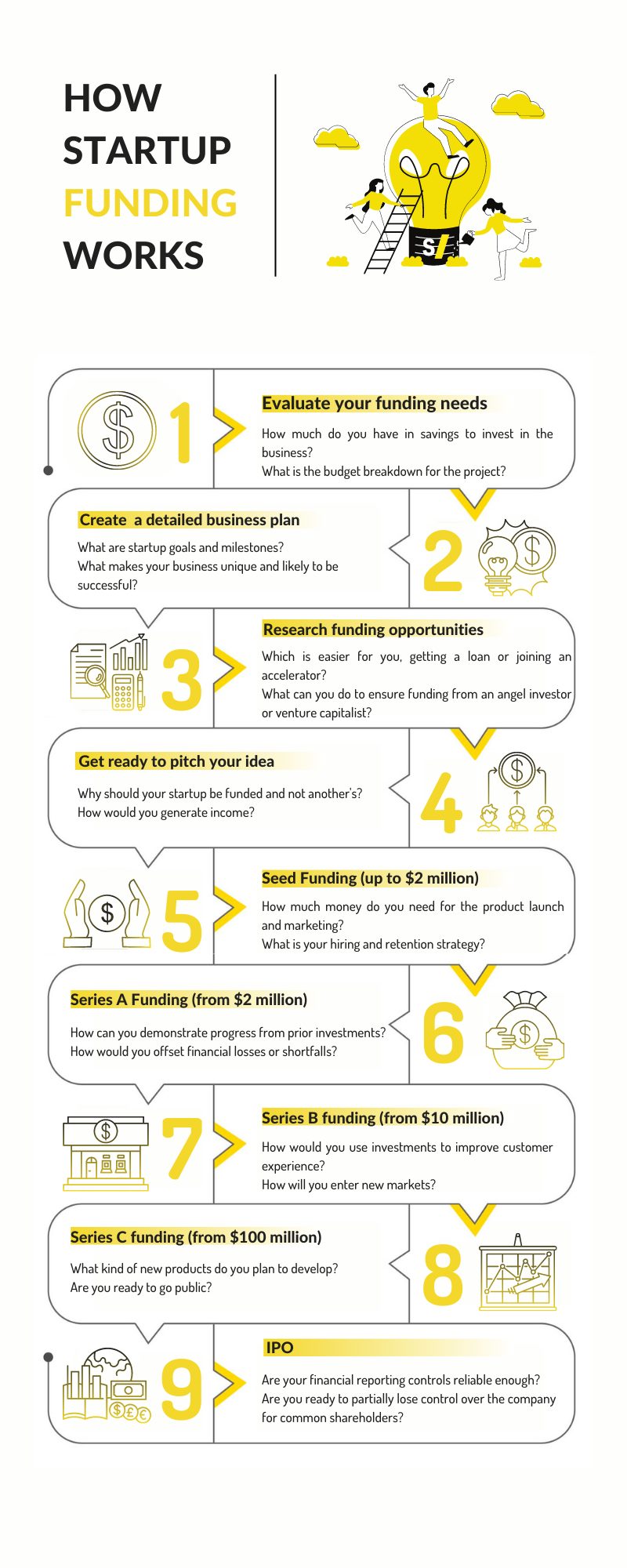Raising funding is a thorny issue, especially for early stage businesses and startups. Yet, capital is everything when it comes to business growth. Let’s try to understand why capitalization is important for startups and young businesses and what is capitalization in the first place.
If you are eager to learn how to capitalize a small business or startup, but are short on time (like all founders are) head on to the end of this post for a TL;DR version of this post.
What is capitalization?
In the context of early stage companies and startups, capitalization refers to raising funding the business will use to operate and grow. Startup initial funding is also called seed funding and allows promising businesses to quickly raise money for their business.
Startup founders often direct seed capital at:
- Establishing headquarters
- Hiring staff
- Purchasing assets and inventory
- Operational costs
- Other overheads
When deciding how to capitalize your small business, make sure you have identified your business objectives. This can include anything from how fast you want to grow to where you want to be several years from now.
Once you have nailed down your long-term goals and outline a business plan, basic expenses and required capital, will you be ready to proceed to options for capitalizing your small business.
Why is capitalization important?
Raising money for a business is no easy task as most founders will know. Capitalization is crucial for startups because it gives them a head start in the game before they earn their first cent.
Here are more advantages of capitalization for small business:
- Risk management
- Knowledge transfer
- Seed capital
- Better scalability
How and when to capitalize a startup?
Before we go on to answer this question, it is worth considering for a moment whether you should capitalize your startup in the first place. After all, some of the trade-offs might not work for everyone.
Prior to even starting looking for investors make sure you:
- Know your market and target audience
- Have a key value proposition
- Know your competitors
- Offer something that solves an existing problem
Investors want to see you have done your research. That is why you do not want to go into the pitch empty handed. Show them the numbers or better yet, demonstrate a minimum viable product (MVP) of your idea. Smart IT can help with MVP development and has worked with numerous startups.
If you do go the bootstrapping route, and want to save a significant share of hard-earned capital in developing your digital product, consider going with a dedicated development center.
Alternatives to bootstrapping
The most common forms of startup capitalization are equity financing and debt financing. In this sense, a company’s valuation, based on its capital, will be the sum of its debt and equity. Let’s take a closer look at each.
Debt financing
Debt financing, as you have probably guessed, refers to taking a loan. The founder essentially borrows funds under condition to pay the lender back with interest, normally over an agreed time period.
Here are the pros and cons of debt funding for startups:
Debt financing advantages
- Maintaining full ownership
- Building creditor trust
Debt financing disadvantages
- Interest
- Obligatory repayments
- Repayment deadlines
- Higher risks
Equity financing
Equity financing for startups refers to investor sponsorship in the form of company stock. In other words, the founder gives up a share of ownership in favor of the capital the investor can supply. There are different forms of equity; stocks and shares are just two of the most popular kinds of equity.
Before going with this option, weigh these pros and cons of equity funding:
Equity financing advantages
- No immediate repayments
- More financial flexibility
- Lower risks
Equity financing disadvantages
- Shared profits due to investor’s stake
- Equity investor involvement in decision-making
- No guarantee of success
There are of-course alternative types of startup funding. You have probably heard about angel investors and seed-round funding using SAFE and KISS agreements.
Apart from running several spin-off startups, Smart IT has also engaged in startups as co-founder. Through the cost and equity model, we established joint ventures that helped small businesses save considerable development costs and benefit from our technological expertise at the same time.
Capitalization planning examples
If you are prepared to raise startup capital, get ready to put together a comprehensive capitalization plan. Your plan will differ depending on the source of capital – equity, debt, or bootstrapping.
Cap tables
If you are looking at equity funding, the cap table will be your solution. Cap tables define investor stakes in the startup. A capitalization table outlines company ownership based on the amount invested and stock owned.
Startup capitalization tables will normally outline investor ownership based on the shares they own or will own. Such tables will normally be updated during a new round of funding.
Debt term sheet
Borrowing from a bank or a private lender will require startup founders to sign under a lending contract with a full summary of terms. Such term sheets will include a full description of terms requirements, including repayment terms, interest and collateral.
Given that the term sheet will constitute a contract, it will have to be put together by a competent legal representative of either the lender, or the borrower.
The spreadsheet
A classic founder tool, the excel (or Google Sheets) spreadsheet can help any founder, big or small. Spreadsheets can help first-time founders especially, to tally up existing capital, keep tabs on expenses and company assets, and monitor when payouts are due.
Startup funding in 2020
A recent Global Startup Funding Report based on surveys conducted by Startup Genome revealed key findings that paint a better picture of the ongoing situation concerning startup capital across the globe.
Published in May, the Global Startup Funding report studies Series A+ funding up until March 2020, indexed from December 2019. The results conclude, or rather count up the damage so far, to be a 20% overall drop in global venture capital funding.
However, the lack of sponsorship is not the only issue at stake. It is further exacerbated by what the report calls the double whammy of the drop in demand — where, apart from funding, revenue is also going down. Numbers show that 75% of all startups have experienced a revenue decline.
A NYT tally counts 6,000 laid-off employees in over 50 startups. Since then, more furloughs and dismissals have been announced on a weekly basis. For some, however, this has not been a barrier for going public, despite cuts.
2020 may not be the most optimistic year when it comes to startup funding, but it should not paint a grim picture for the startup capitalization scene. No matter what, the storm will be weathered and there will be room for new startups to emerge with fresh ideas that need ivesting.
Small business capitalization done wisely
To recap everything said above, remember that whatever company capitalization option you choose, make sure that it aligns with your business objectives. Curb your ambitions in favor of a more number driven approach if you are attracting equity or debt capital. Stick to the tried and true balance sheet if you decide to push through on your own.
Here is the TL;DR version of this article as promised.
Startup capitalization refers to seed funding or raising initial operational and growth capital.
Small businesses and startups benefit from capitalization because it allows them to focus on building a great product or service without thinking where to find the money to build it.
Debt financing, equity financing and bootstrapping are some of the most common forms of startup capitalization.
Depending on the type of funding you receive you will want to look into capitalization tables or a debt/lender contract. The spreadsheet is a handy tool in any scenario.
28 September 2020

 Pavel Kaplunou
,
Pavel Kaplunou
, 




